Gengxin Liu
Semi-Weakly Supervised Object Kinematic Motion Prediction
Apr 03, 2023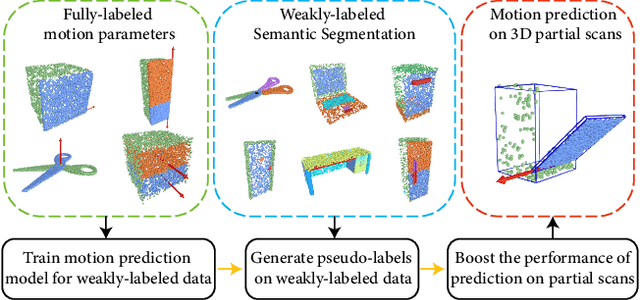
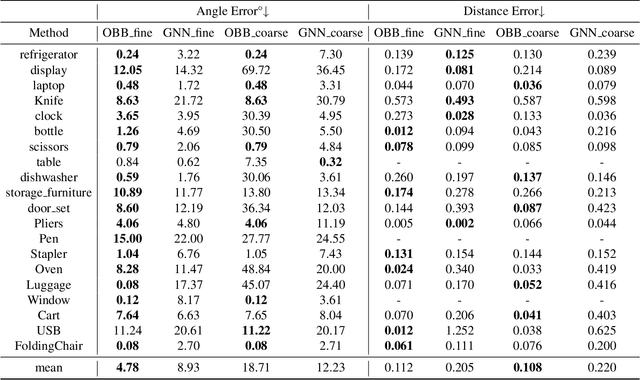


Abstract:Given a 3D object, kinematic motion prediction aims to identify the mobile parts as well as the corresponding motion parameters. Due to the large variations in both topological structure and geometric details of 3D objects, this remains a challenging task and the lack of large scale labeled data also constrain the performance of deep learning based approaches. In this paper, we tackle the task of object kinematic motion prediction problem in a semi-weakly supervised manner. Our key observations are two-fold. First, although 3D dataset with fully annotated motion labels is limited, there are existing datasets and methods for object part semantic segmentation at large scale. Second, semantic part segmentation and mobile part segmentation is not always consistent but it is possible to detect the mobile parts from the underlying 3D structure. Towards this end, we propose a graph neural network to learn the map between hierarchical part-level segmentation and mobile parts parameters, which are further refined based on geometric alignment. This network can be first trained on PartNet-Mobility dataset with fully labeled mobility information and then applied on PartNet dataset with fine-grained and hierarchical part-level segmentation. The network predictions yield a large scale of 3D objects with pseudo labeled mobility information and can further be used for weakly-supervised learning with pre-existing segmentation. Our experiments show there are significant performance boosts with the augmented data for previous method designed for kinematic motion prediction on 3D partial scans.
Active Self-Training for Weakly Supervised 3D Scene Semantic Segmentation
Sep 15, 2022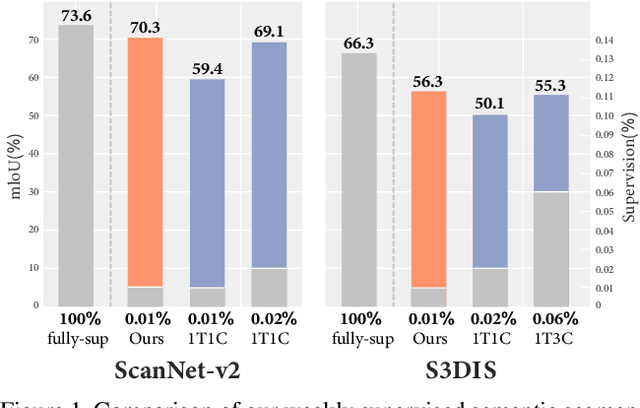
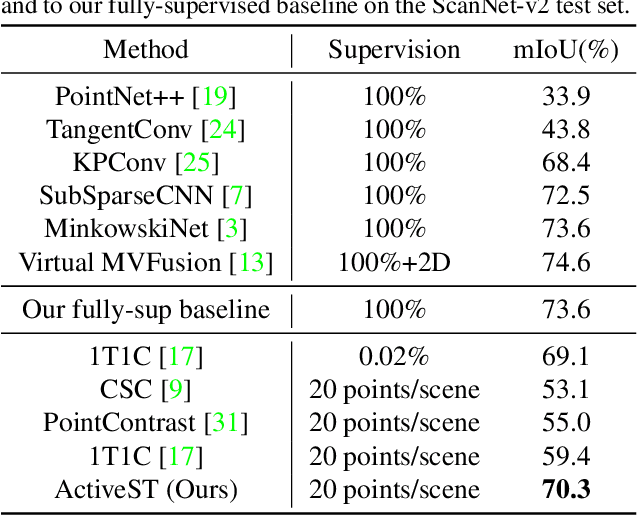
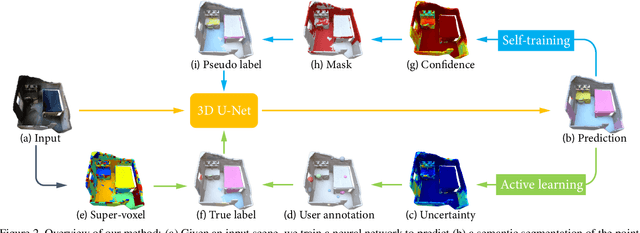
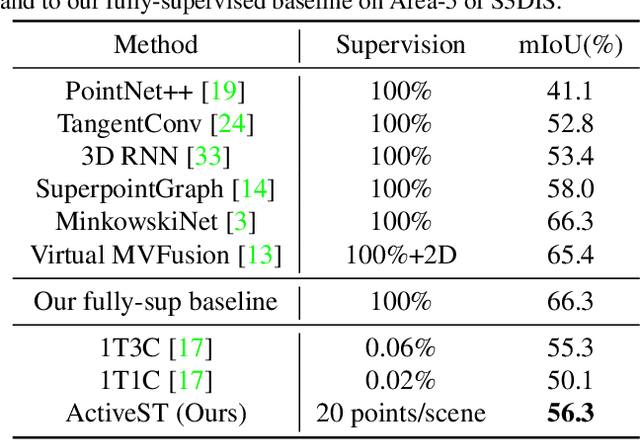
Abstract:Since the preparation of labeled data for training semantic segmentation networks of point clouds is a time-consuming process, weakly supervised approaches have been introduced to learn from only a small fraction of data. These methods are typically based on learning with contrastive losses while automatically deriving per-point pseudo-labels from a sparse set of user-annotated labels. In this paper, our key observation is that the selection of what samples to annotate is as important as how these samples are used for training. Thus, we introduce a method for weakly supervised segmentation of 3D scenes that combines self-training with active learning. The active learning selects points for annotation that likely result in performance improvements to the trained model, while the self-training makes efficient use of the user-provided labels for learning the model. We demonstrate that our approach leads to an effective method that provides improvements in scene segmentation over previous works and baselines, while requiring only a small number of user annotations.
 Add to Chrome
Add to Chrome Add to Firefox
Add to Firefox Add to Edge
Add to Edge